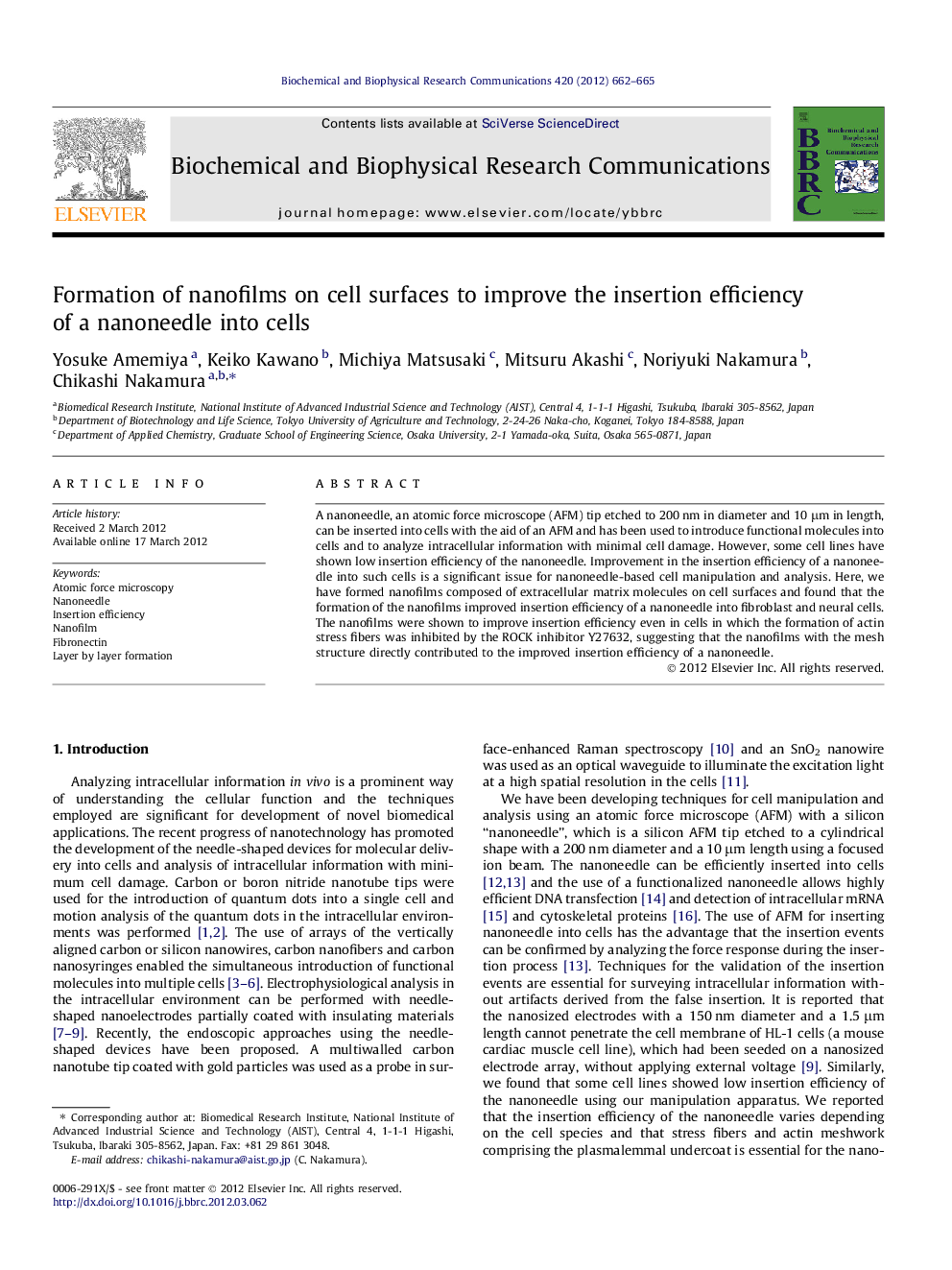| Article ID | Journal | Published Year | Pages | File Type |
|---|---|---|---|---|
| 1929824 | Biochemical and Biophysical Research Communications | 2012 | 4 Pages |
A nanoneedle, an atomic force microscope (AFM) tip etched to 200 nm in diameter and 10 μm in length, can be inserted into cells with the aid of an AFM and has been used to introduce functional molecules into cells and to analyze intracellular information with minimal cell damage. However, some cell lines have shown low insertion efficiency of the nanoneedle. Improvement in the insertion efficiency of a nanoneedle into such cells is a significant issue for nanoneedle-based cell manipulation and analysis. Here, we have formed nanofilms composed of extracellular matrix molecules on cell surfaces and found that the formation of the nanofilms improved insertion efficiency of a nanoneedle into fibroblast and neural cells. The nanofilms were shown to improve insertion efficiency even in cells in which the formation of actin stress fibers was inhibited by the ROCK inhibitor Y27632, suggesting that the nanofilms with the mesh structure directly contributed to the improved insertion efficiency of a nanoneedle.
► We examined the insertion efficiency of nanoneedles into fibroblast and neural cells. ► Nanofilms formed on cell surfaces improved the insertion efficiency of nanoneedles. ► Nanofilms improved the insertion efficiency even in Y27632-treated cells.
